Library
All resources
1981 – 2000 of 2421 results

Payment Mechanisms and Anti-Poverty Programs: Evidence from a Mobile Money Cash Transfer Experiment in Niger
Report
Cash transfers have become an increasingly important component of social protection policies in both developed and developing countries. While such programs are often implemented electronically in developed countries, in many developing countries with weak financial infrastructure, such transfers are...

Philippines Typhoon Appeal: Contribution to Change Evaluation
Report
Typhoon Yolanda (known internationally as Haiyan), hit Eastern Samar, Leyte and Central Visayas in the Philippines on November 8, 2013, and is one of the strongest typhoons ever recorded. A total of 16 million people were affected; 6,300 died, 4.1 million were displaced, and 1.1 million houses were...
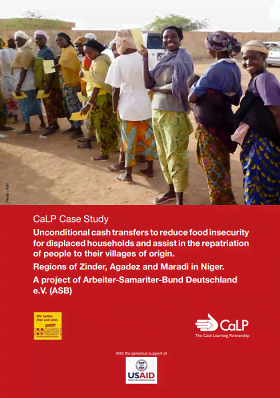
The CALP Network case study – Unconditional cash transfers to reduce food insecurity for displaced households and assist in the repatriation of people to their villages of origin – Niger
Report
In 2012, Niger was affected by a food crisis that caused large population displacements. The NGO Arbeiter- Samariter-Bund Deutschland e.V. (ASB) distributed unconditional cash transfers in areas of food insecurity to improve food access for those displaced and those affected, and to help repatriate...

CTP factsheet – Vietnam Red Cross – cash transfer preparedness pilot
Report
The IFRC worked with four pilot countries between May 2012 and December 2013 to enable the National Societies to use cash transfer programming to address relief needs at scale, implementing it more rapidly and targeting a larger number of households. The Vietnam Red Cross was one of the four...
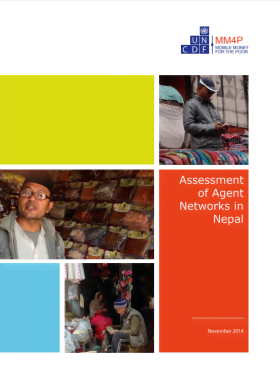
Assessment of Agent Networks in Nepal
Report
This report focuses on assessing the existing agent networks in Nepal, so that the correct steps can be taken to popularise both access to and use of financial services through bank-led agent banking. After the release of electronic banking regulations in 2012, many financial institutions began...
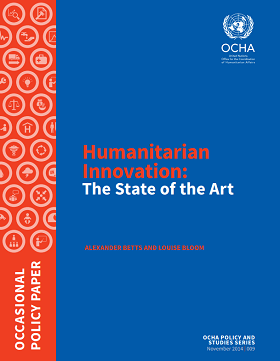
Humanitarian Innovation: The State of the Art
Policy paper
The humanitarian system faces grave challenges, as record numbers of people are displaced for longer periods by natural disasters and escalating conflicts. At the same time new technologies, partners, and concepts allow humanitarian actors to understand and address problems quickly and effectively....

Social transfers in the fight against hunger – A resource for development practitioners
Report
A European Commission Reference Document aims to deepen the understanding of a concept, develop knowledge, provide orientations for aid implementation, and present good practices. This Reference Document is intended as a resource to support the practical integration of social transfers into programmes...
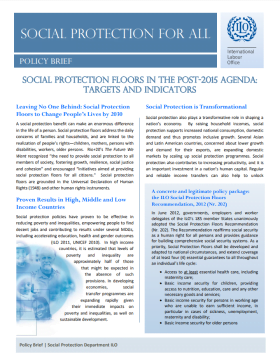
Social Protection Floors in the Post-2015 Agenda: Targets and indicator
Policy paper
A policy brief outlining the post-2015 targets and indicators for social protection. To be transformational and make a real difference in people’s lives by 2030, two issues are critical: (1) universal coverage, for all, and (2) adequate benefits, ensuring that at least all in need receive sufficient...
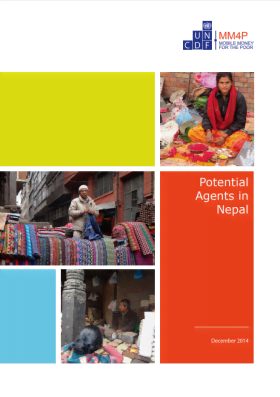
Potential Agents in Nepal
Report
Nepal is characterised by unique geographical diversity, with regions consisting of mountains (parbat), hills (pahar) and lowands (terai). Numerous financial institutions in a variety of forms—such as banks, savings and credit co-operatives (SACCOs) and microfinance institutions—are engaged...

The Supply Chain in Cash and Voucher Programmes
Presentation
This video explains how supply chains play a critical role in cash and markets based humanitarian programmes. Everything we do in a crisis has an impact on local markets; cash and voucher based assistance only works when we monitor markets and maintain our own supply chain for when it’s needed.
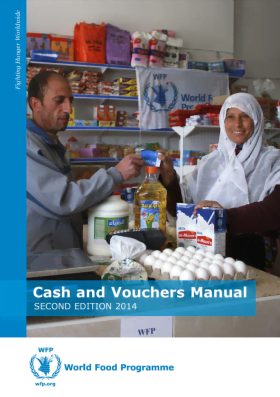
Cash and Vouchers Manual – Second edition
Guidelines and Tools
This second edition of the Cash and Vouchers Manual captures the latest corporately endorsed business processes and procedures, providing the most up-to-date tools (i.e. analytical, assessment, monitoring) that have been developed through close intra-departmental collaboration between Headquarters...
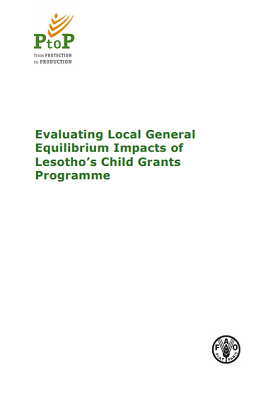
Evaluating Local General Equilibrium Impacts of Lesotho’s Child Grants Programme
Report
This report presents findings from a local economy-wide impact evaluation (LEWIE) of Lesotho’s Child Grants Programme. Simulations indicate that total income impacts significantly exceed the amounts transferred under the programme: each loti transferred stimulates local nominal income gains of up to...
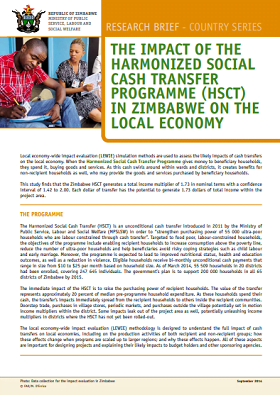
The Impact of the Harmonized Social Cash Transfer Programme (HSCT) in Zimbabwe on the Local Economy
Report
Local economy-wide impact evaluation (LEWIE) simulation methods are used to assess the likely impacts of cash transfers on the local economy. When the Harmonized Social Cash Transfer Programme gives money to beneficiary households, they spend it, buying goods and services. As this cash swirls around...
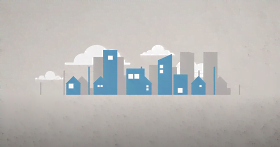
Cash transfer programming – an introduction (low resolution video)
Video
Since 2010, the European Commission’s Humanitarian Aid and Civil Protection department has been supporting a partnership between IFRC, the CALP Network and British Red Cross. The partnership seeks to use cash where it’s appropriate and to help ensure that the humanitarian community has the skills...
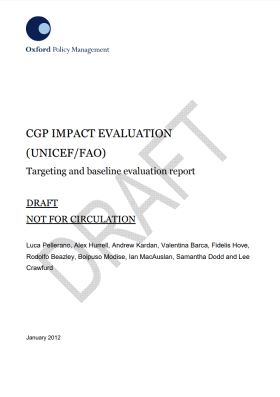
CGP Impact Evaluation (UNICEF/FAO): Targeting and baseline evaluation report
Report
The Child Grants Programme (CGP) is an unconditional cash transfer targeted to poor and vulnerable households in Lesotho. The primary objective of the CGP is to improve the living standards of Orphans and Vulnerable Children (OVC) so as to reduce malnutrition, improve health status, and increase school...

Understanding the Demand for Financial Services in Nepal
Report
Nepal has a unique geography consisting of mountains, hills and Terai, which makes it difficult for any financial institution to provide financial services to every part of the country. Formal and informal financial service providers have been attempting to reach more customers at various levels and...
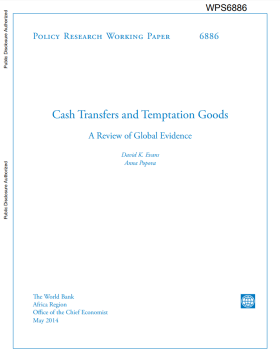
Cash Transfers and Temptation Goods: A review of global evidence
Report
Cash transfers have been demonstrated to improve education and health outcomes and alleviate poverty in various contexts. However, policy makers and others often express concern that poor households will use transfers to buy alcohol, tobacco, or other “temptation goods”. This paper reviews 19...
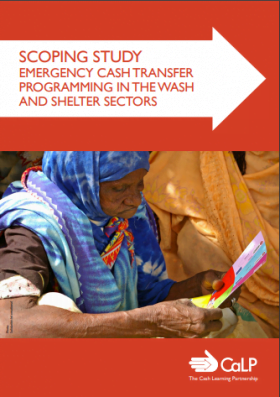
Scoping study – Emergency cash transfer programming in the WaSH and shelter sectors
Report
Over the past few years, the dialogue on cash transfer programming has progressed beyond initial debates about whether distributing cash and vouchers is a valid response modality at all to a general acceptance of their added value in appropriate contexts. Beyond the livelihoods and food...
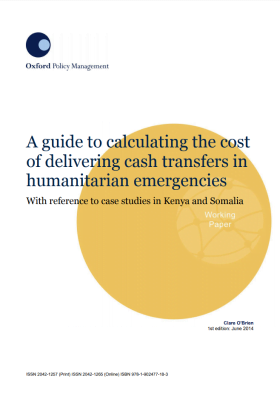
A Guide to Calculating the Cost of Delivering Cash Transfers in Humanitarian Emergencies – With reference to case studies in Kenya and Somalia
Report
The emergence of cash transfers as a viable alternative to in-kind aid – such as food or shelter materials – for households affected by humanitarian disasters has been documented for some years now. Under certain conditions, when local markets are able to accommodate increased demand and prices will...

Sector Indicator Guidance for Programming
Guidelines and Tools
The country Programming Instructions that were sent to EU Delegations and HQ services in mid-May 2012 for the programming period 2014-2020, requested the EU Delegations and services to provide, in the second phase of the programming process, a description of specific objectives for proposed priority...